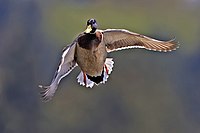Taiwan culls 18000 chickens due to H5N2 virus outbreak
Sunday, December 21, 2008

New outbreaks of H5N2 have been confirmed in Taiwan. Council of Agriculture (COA) Minister Chen Wu-hsiung has confirmed on Saturday that "the recent chicken deaths at a poultry farm in Kaohsiung County’s Luchu Township (on October 21) were caused by the low-pathogenic H5N2 bird flu virus, that is not communicable to humans." They had slaughtered 18,000 chickens on November 14. "The problem has been resolved," he said. COA has been monitoring wild and migratory birds and said "it is still investigating the source of the infection."
Lujhu Township (蘆竹鄉) is a rural township in northwestern Taoyuan County in Taiwan. It is located at kilometer 49 of the Highway no.1, close to the Taiwan Taoyuan International Airport (IATA: TPE). Kaohsiung County (高雄縣, Gāoxióng Xiàn, Gaosyóng Siàn, Kao-hsiung Hsien; Ko-hiông-kōan) is a county in southern Taiwan administered as a County of Taiwan. It encloses but does not include Kaohsiung City.
Mr Huang Kwo-ching, deputy director of the Bureau of Animal and Plant Health Inspection and Quarantine, however, said, "we took the most stringent measures in dealing with the episode as according to the rules of the World Organisation for Animal Health (OIE), there was no need to slaughter those chickens."

H5N2 is a subtype of the species Influenzavirus A (avian influenza virus or bird flu virus). A highly pathogenic strain of H5N2 caused bird flu outbreaks with significant spread to numerous farms, resulting in great economic losses in 1983 in Pennsylvania, USA in chickens and turkeys, in 1994 in Mexico in chickens and a minor outbreak in 1997 in Italy in chickens.
Deputy Minister Hu Sing-hwa (胡興華) explained that “after viral separation and cultivation, second results showed that the chickens had a H5N2 Intravenous Pathogenicity Index [IVPI] of 0.89, which makes it low-pathogenic,” adding that "We will also continue to monitor the 76 chicken farms around the affected farm for three months.”
Taiwan has thus stopped its poultry exports for at least three months.
Meanwhile, Taiwan News has reported that "Japan has banned the imports of Taiwan’s poultry. Being the biggest duck provider to Japan, Taiwan exports 5,000 tons of duck annually worth US$23 million (approximately NT$750 million). For the time being, US$4 million (NT$130 million) worth of duck in the process of shipping, customs clearance is expected to be affected." For this reason, COA has promised to subsidize poultry farmers affected by the virus which broke out on October 21. H5N2 avian flu strain first broke out in Taiwan in January 2004.
Related news
- "Major new bird flu outbreaks reported in Asia" — Wikinews, November 4, 2005
Sources
- Taiwan News, Website Editorial Staff. "Taiwan COA to subsidize poultry farmers affected by avian flu" — Taiwan News, December 21, 2008
- Meggie Lu. "OA confirms Luchu bird flu outbreak" — Taipei Times, December 21, 2008
- Agence France-Presse. "Taiwan culls 18,000 chickens" — The Straits Times, December 18, 2008
- Central News Agency. "H5N2 confirmed in south Taiwan" — Taiwan News, December 20, 2008
- "Avian influenza A(H5N1)- update 31: Situation (poultry) in Asia: need for a long-term response, comparison with previous outbreaks" — WHO, March 2, 2004


